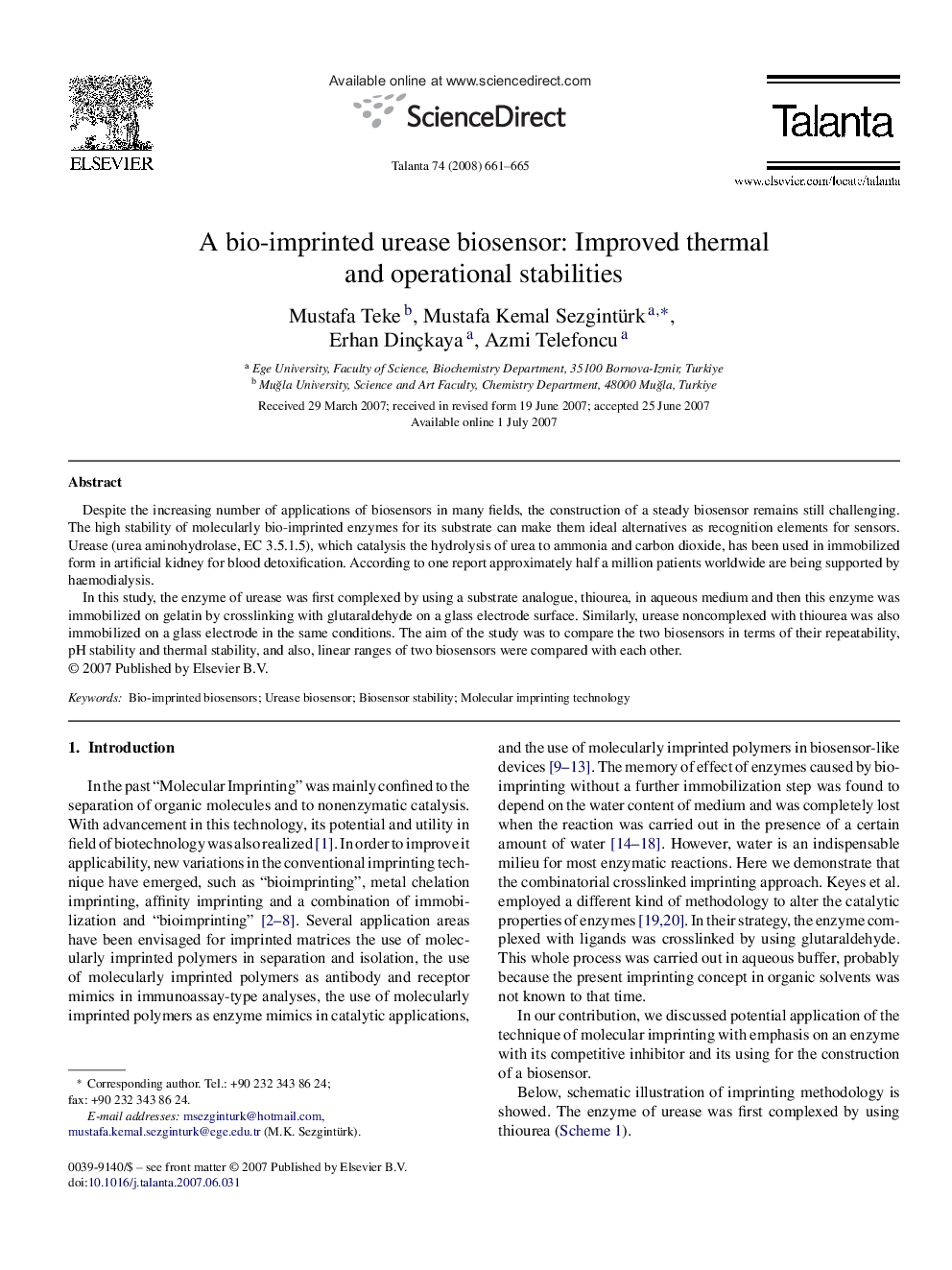| Article ID | Journal | Published Year | Pages | File Type |
|---|---|---|---|---|
| 1247098 | Talanta | 2008 | 5 Pages |
Despite the increasing number of applications of biosensors in many fields, the construction of a steady biosensor remains still challenging. The high stability of molecularly bio-imprinted enzymes for its substrate can make them ideal alternatives as recognition elements for sensors. Urease (urea aminohydrolase, EC 3.5.1.5), which catalysis the hydrolysis of urea to ammonia and carbon dioxide, has been used in immobilized form in artificial kidney for blood detoxification. According to one report approximately half a million patients worldwide are being supported by haemodialysis.In this study, the enzyme of urease was first complexed by using a substrate analogue, thiourea, in aqueous medium and then this enzyme was immobilized on gelatin by crosslinking with glutaraldehyde on a glass electrode surface. Similarly, urease noncomplexed with thiourea was also immobilized on a glass electrode in the same conditions. The aim of the study was to compare the two biosensors in terms of their repeatability, pH stability and thermal stability, and also, linear ranges of two biosensors were compared with each other.
